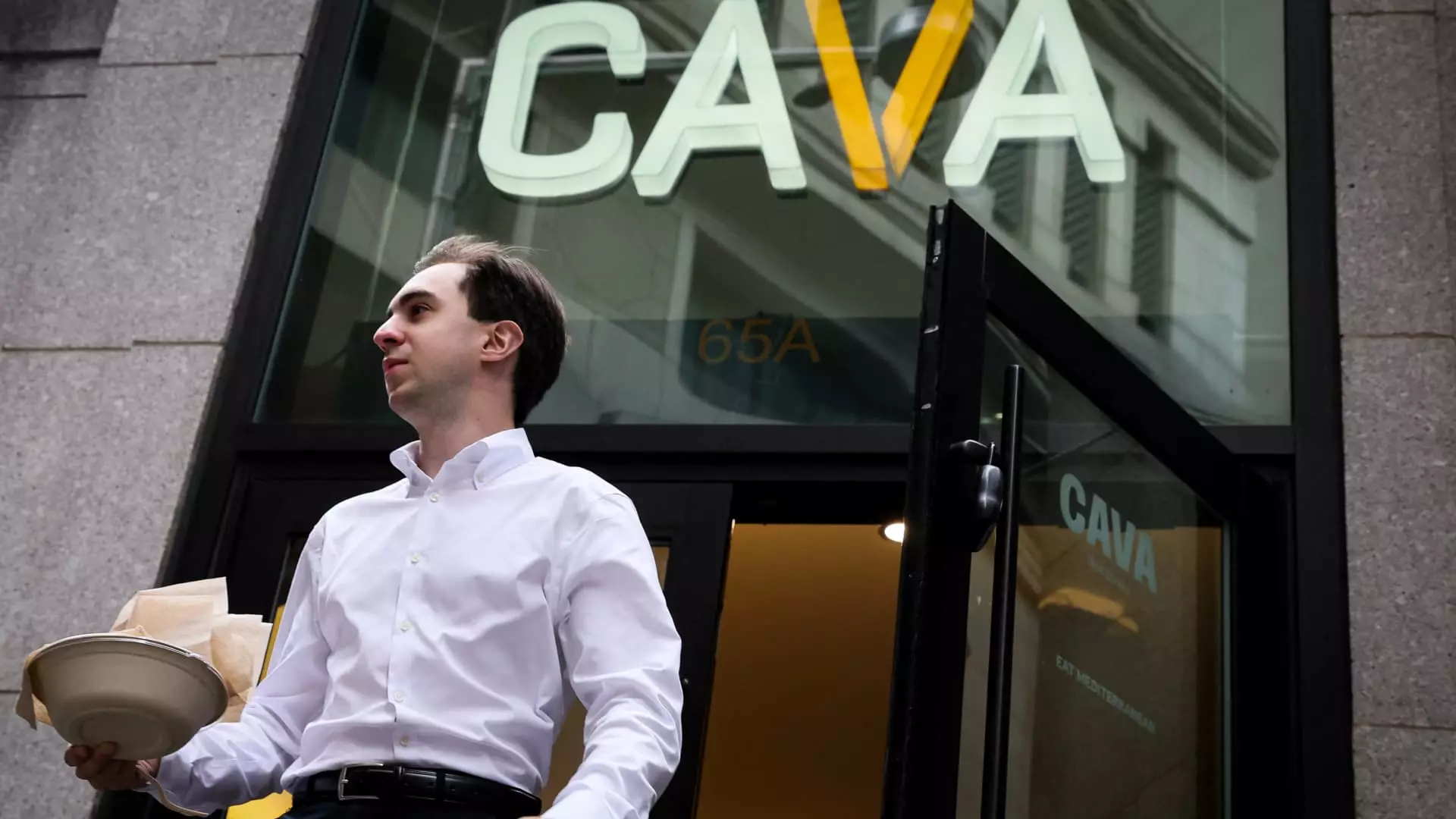In today’s competitive and uncertain economic climate, fast-casual restaurant chains have thrown their lot behind loyalty programs as a shield against waning consumer confidence. But beneath the surface lies a complex web of strategic manipulation that questions the very foundation of genuine brand allegiance. These programs, marketed as tools to deepen connections and reward customers, are increasingly becoming a double-edged sword—exploiting consumer habits and fostering dependency rather than fostering authentic relationships.
While brands like Starbucks, Chipotle, and Cava trumpet their growing rewards memberships as evidence of loyalty-building success, this narrative conveniently overlooks the underlying motive: extracting more value from consumers at a time when their wallets are tighter than ever. The reality is that these programs often serve merely as bait, designed to keep consumers caught in a cycle of repeat visits—regardless of whether those visits translate into real satisfaction or long-term brand affinity.
The assumption that a points-based system or occasional perks can substitute for genuine emotional connection is a flawed premise. Loyalty programs, in their current guise, tend to prioritize short-term engagement, encouraging behaviors driven primarily by the promise of discounts or freebies rather than authentic appreciation of a brand’s values or quality. Such tactics only serve to mask the deeper issue of consumer fatigue and growing disillusionment with marketing gimmicks that Forbes increasingly deem as superficial.
The Misleading Metrics and Price Tag of Loyalty
Proponents celebrate the increase in customer visits and sales attributable to membership incentives, citing data such as overnight jumps in digital engagement or higher transaction volumes among members. But this focus on numbers can be dangerously misleading. Are these behaviors driven by genuine enthusiasm? Or are consumers merely responding to the lure of earning points and free items—an ephemeral, transactional game designed to divert attention from declining service or product quality?
For instance, Starbucks boasts millions of rewards members contributing over half of its transactions, yet the company’s recent sales downturns suggest that these numbers may not translate into sustainable growth. The decline in same-store sales for chains like Chipotle and Starbucks underscores a crucial truth: loyalty programs are no silver bullet in a downturn. Instead, they can become an expensive distraction—an attempt to engineer behavior without addressing core issues like menu innovation or customer experience.
Moreover, the costs associated with freebies and promotional campaigns are staggering. In an industry characterized by razor-thin margins, pouring resources into giveaways risks eroding profitability unless carefully calibrated. Yet, many brands seem to accept this risk, banking on the hope that fleeting discounts will breed lasting loyalty. This strategy, however, often results in consumers becoming conditioned to expect freebies, leading to an unsustainable cycle of dependence that ultimately devalues the brand.
The Contradiction of Innovation Amidst Consumer Skepticism
The recent efforts of chains like Cava and Potbelly to overhaul their loyalty strategies reveal a troubling contradiction: brands recognize the need for fresh tactics yet struggle to genuinely evolve beyond traditional discounting. Cava’s reimagined program offers perks like limited-time challenges and personalized rewards, aiming to foster engagement beyond simple discounts. Still, these efforts risk being perceived as superficial—window dressing in an era where consumers are increasingly skeptical of brands’ motives.
Similarly, Potbelly’s coin-based system enables faster redemptions but subtly pushes consumers toward more frequent visits with the promise of immediate gratification. While reports claim “positive responses,” the broader danger lies in fostering a consumer culture that values quick wins over authentic brand appreciation. This cycle risks prioritizing short-term tactics over sustainable, value-driven relationships.
Meanwhile, Starbucks’ controversial shift from reusable cup bonuses to double-star earnings exemplifies how even industry leaders are resorting to strategic tinkering that may ultimately alienate loyal customers. The controversy highlights an important point: traditional rewards need to be meaningful—not just shifting the goalposts in ways that appear to “improve” the program but actually erode consumer trust.
The Mirage of Consumer Engagement in a Market That Demands Authenticity
Ultimately, loyalty programs in the fast-casual space are caught in a moral dilemma—are they genuinely designed to reward consumers, or are they cleverly disguised revenue engines? The truth leans toward the latter. While brands tout their “innovations” and “personalized offers,” they often neglect the importance of authentic engagement rooted in quality, transparency, and respect for consumers’ intelligence.
As consumers become more discerning and skeptical of marketing ploys, the superficial allure of points and freebies is losing its charm. In this environment, a successful loyalty program must do more than just incentivize frequent visits; it must build trust, deliver consistent value, and respect the customer’s intelligence. Anything less risks being just another fleeting gimmick—one that may boost short-term sales but ultimately sabotages long-term brand integrity.
The current obsession with rewards reflects a broader industry trend: the desperation to cling to consumer loyalty in a volatile economy. Yet, without addressing the deeper issues of service quality, value proposition, and authentic connection, these initiatives will remain hollow gestures—costly, unsustainable, and ultimately ineffective at fostering true allegiance in an era where trust is more valuable than ever.

